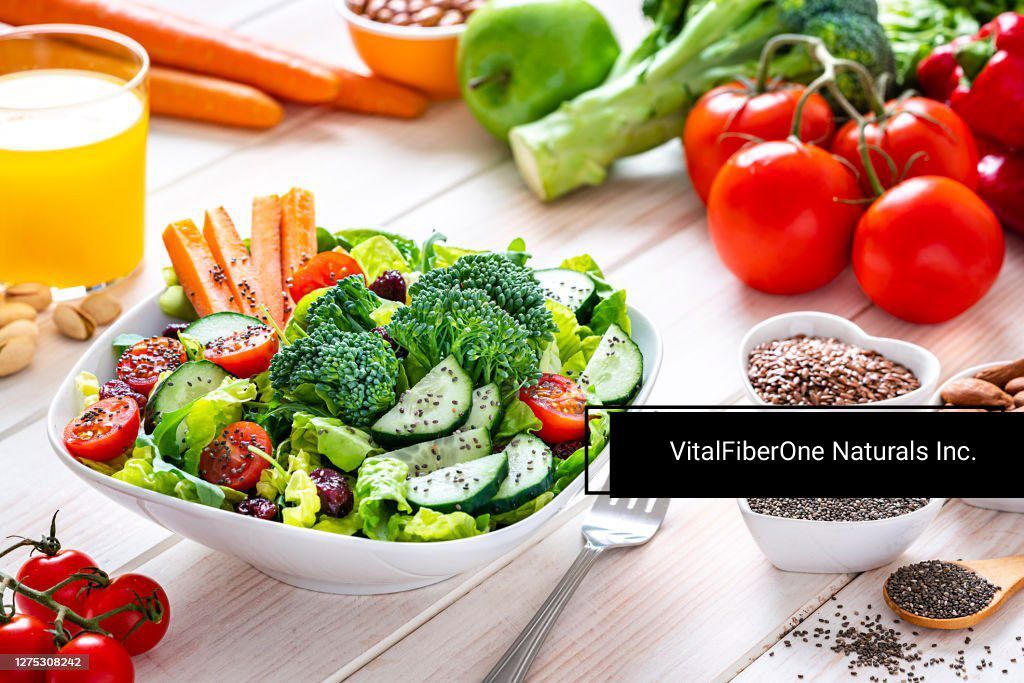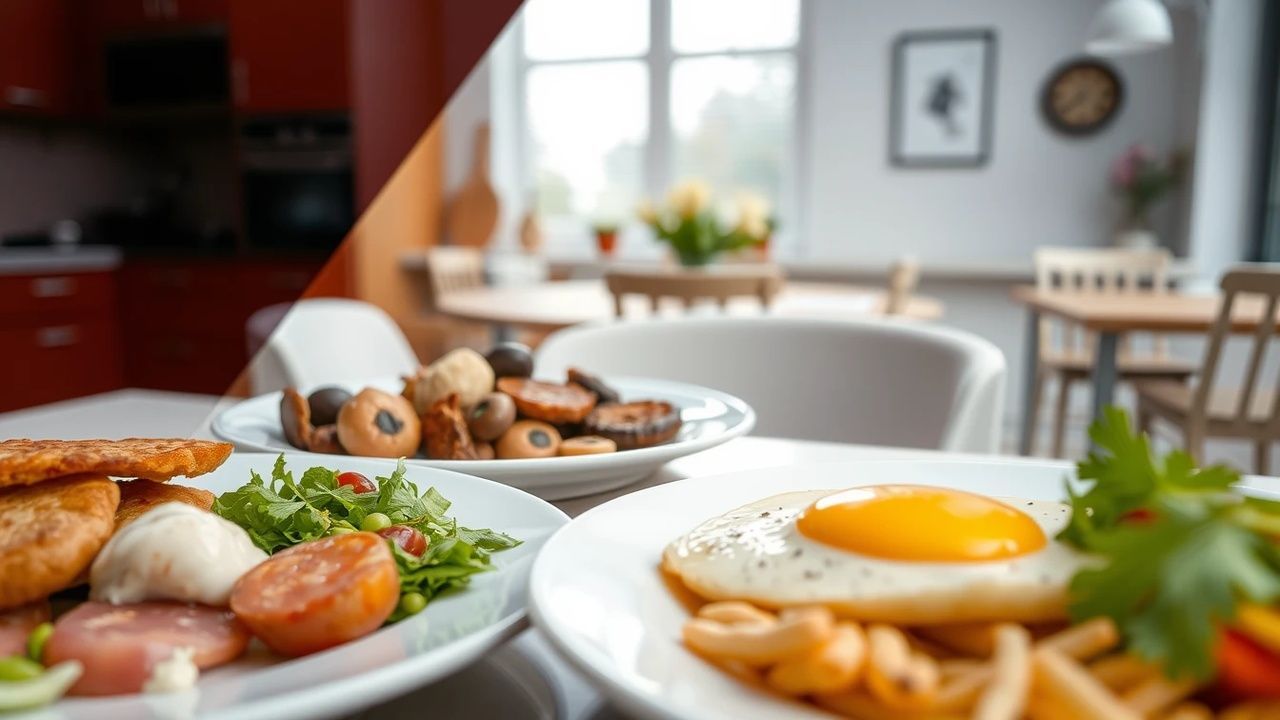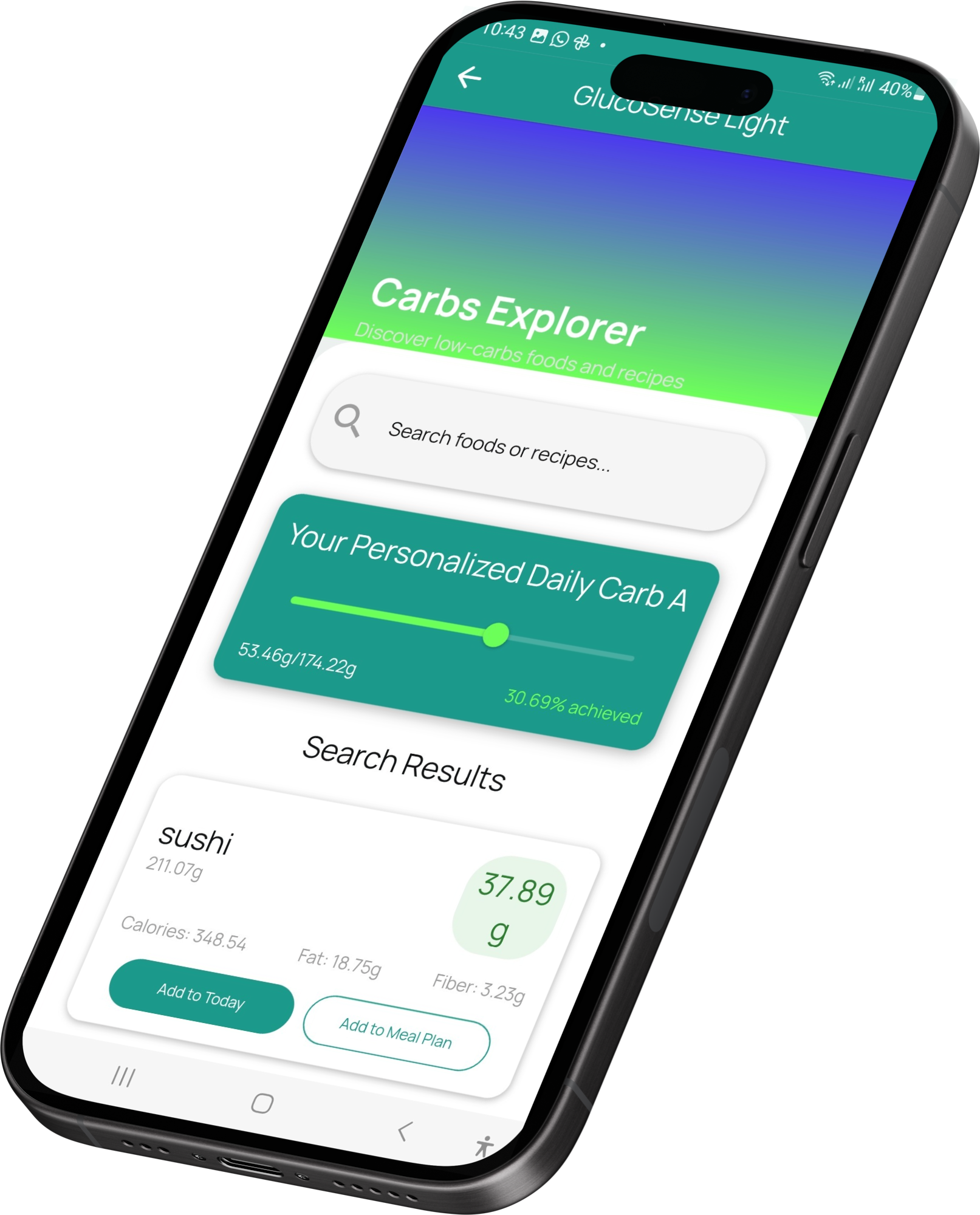Blog-Layout
From Salads to Desserts: Creative Ways to Incorporate Chia Seeds into Any Meal
VitalFiberOne Naturals Inc. • March 27, 2024
From Salads to Desserts: Creative Ways to Incorporate Chia Seeds into Any Meal

Chia seeds are not just a health food trend; they are a versatile superfood that can elevate the nutritional value of nearly any dish. Packed with omega-3 fatty acids, fiber, and antioxidants, these tiny seeds are a powerhouse of nutrients. In this post, we will dive into the many inventive ways you can include chia seeds in your daily meals, from kick-starting your day with a nutrient-rich breakfast to ending it on a sweet note with a guilt-free dessert.
**Breakfast: The Powerhouse Pudding**
Beginning our culinary journey, breakfast is transformed with a simple yet elegant chia seed pudding. Combine chia seeds with almond milk and a touch of honey, then let the mixture sit overnight. The result? A creamy and satisfying dish that serves as a blank canvas for your favorite toppings. Try adding fresh fruits, nuts, or a dollop of natural yogurt for that perfect morning boost.
**Snacks: Energy-Boosting Bites**
For a mid-day snack, chia energy bars are the perfect pick-me-up. Mix chia seeds with oats, nuts, dried fruit, and honey for a chewy treat that’s both satisfying and nourishing. These bars provide a substantial amount of energy, fiber, and protein, all essential for a busy day ahead.
**Lunch: The Crunchy Salad Sprinkle**
Elevate your salads by sprinkling a tablespoon of chia seeds right before serving. This not only adds a delightful crunch but also boosts your intake of fiber and protein. Whether it’s a garden-fresh green salad or a hearty quinoa bowl, chia seeds are a perfect complement.
**Dinner: Dynamic Duo of Texture and Nutrition**
When dinner rolls around, chia seeds can play a subtle yet powerful role in your meal. For instance, create a robust and nutritious crust for your baked salmon or chicken by mixing chia seeds with lemon zest, garlic powder, and breadcrumbs. Not only is the exterior wonderfully crunchy, but it also packs a nutritious punch. For a vegetarian option, incorporate chia seeds into your veggie patties. They act as a binding agent and add a nice textural element to your meal.
**Side Dishes: Chia-Infused Goodness**
Don't stop at the main course; side dishes present another excellent opportunity to get creative with chia seeds. Stir them into whole-grain rice, sprinkle over roasted vegetables, or blend into your homemade vinaigrettes. These tiny seeds can also thicken sauces naturally without the need for heavy starches.
**Desserts: Guilt-Free Indulgence**
Dessert is where chia seeds really shine. For a light, delicate treat, chia seeds can turn the average fruit compote into a rich jam when left to soak up the natural fruit juices. If you're craving something creamy, make a chia mousse by blending coconut milk, cacao powder, and chia seeds until smooth then chill it to set. The seeds will expand, giving the mousse an indulgent texture that's both healthy and satisfying.
**Beverages: Sip on Superfoods**
Finally, chia seeds can make their way into your hydration habits, too. Stir them into iced green tea, fresh lemonade, or blend them into your post-workout smoothies for an extra nutrient boost. Their gel-like consistency when soaked adds a fun texture that will make your beverages feel like a special treat.
Incorporating chia seeds into your diet isn't just about harnessing their health benefits—it's about exploring the potential of every meal to be a fusion of flavor, texture, and nutrition. With their mild, nutty flavor and versatile nature, chia seeds rightly deserve their superfood status and can be seamlessly included in any dish you desire.
Remember, while chia seeds are incredibly beneficial, balance is key to a healthy diet. They are an addition to the variety of foods that comprise your daily meals.
Ready to start your chia-filled culinary adventure? Share this post with your friends and family and spread the joy of healthy, delicious eating! And don't forget to check back often for more inspiring ways to make every meal healthier and more exciting. If you've tried any of the ideas mentioned or have your own unique chia seed recipes, we'd love to hear from you. Comment below or connect with us on social media to join the conversation about the wonders of chia seeds in everyday cooking.
As you continue to discover the versatility of chia seeds in your culinary practices, remember that the possibilities are as limitless as your imagination. With each sprinkle, blend, or mix-in, you're boosting your health and opening up a new spectrum of tastes and textures.
So, whether it's through a refreshing morning pudding or a satisfying dessert that caps off your day, let chia seeds be your go-to superfood for an elevated dining experience. Eat well, live well, and thrive with every chia-infused bite!
Remember, a balanced diet is a cornerstone of health and chia seeds are just one of many nourishing foods that can contribute to a healthy lifestyle. Pair these small but mighty seeds with a colorful variety of fruits, vegetables, whole grains, and proteins for a well-rounded approach to wellbeing. Cheers to your health and the endless culinary creations that await you with chia seeds!
By integrating chia seeds into your daily meals, you're not just committing to a healthier diet; you're embracing a lifestyle that celebrates diversity in nutrition and enjoyment in every bite. So, the next time you're planning your menu, think of the small but transformative chia seed—your ticket to a world of innovative flavors and health benefits.
Stay tuned to our blog for more health tips, recipe ideas, and the latest in wellness trends. Your journey to a more vibrant life through food begins here! And don't forget to experiment! The kitchen is your playground, and chia seeds are just one of the many wonderful ingredients you can play with. Mixing them into different recipes might lead to your next favorite dish or a happy accident that becomes a staple at your family table.
We invite you to start with the basics but then branch out. Chia seeds can become a thickener for soups, a replacement for eggs in baking for those with allergies, or even a gel base for nutrient-packed hair and skin masks. There's a whole world of chia seed applications just waiting to be explored in and out of the kitchen.
Incorporating these seeds into your meals is also a step towards more sustainable eating habits. Chia is a resilient crop that requires less water than many seeds and grains, making it an environmentally friendly choice for those looking to reduce their ecological footprint.
Can you imagine the difference if we all took a small step towards including more sustainable superfoods like chia in our diets? Not only would we benefit individually, but we would also collectively contribute towards a more sustainable food system.
Start with one meal, one recipe, and see where this chia seed journey takes you. You might just be surprised at how these tiny seeds can inspire big changes.
Thank you for reading, and we hope you've been inspired to sprinkle, blend, soak, and enjoy chia seeds in your meals. Stay with us for more exciting health and wellness content that will help you and your loved ones live life to the healthiest, fullest, and most flavorful.
**Remember**:
- It's not just what you eat; it's how you incorporate it into your life.
- Small changes can have broad impacts on your health and the planet.
- Every meal is an opportunity for nourishment and joy.
Say 'yes' to health, 'yes' to flavor, and 'yes' to chia!
For more tips, recipes, and life hacks, bookmark our blog and never miss an update. Together, let's make wellness a delicious adventure. Thank you for indulging in our guide to incorporating chia seeds into your diet. We hope that it has not only enlightened you on the nutritional benefits of chia seeds but also inspired you to innovate your meals with the versatility of this superfood.
We remain committed to providing you with content that enhances your lifestyle and well-being. Your journey to better health is unique, and we're here to support you with information that empowers and encourages you.
Be on the lookout for our next piece where we'll delve deeper into superfoods that complement chia seeds, and how to balance flavors and nutrients for optimal health benefits. Until then, happy cooking, and enjoy the delightful, nutritious world of chia seeds in every dish!
If you've got questions, thoughts, or feedback, don't hesitate to reach out. We're eager to hear how chia seeds are making a splash in your kitchen and life!
Happy eating and living vibrantly!
#StayHealthy #ChiaInspiration #SuperfoodJourney

By VitalFiberOne Naturals Inc.
•
February 8, 2025
Revolutionize your diabetes care with the power of AI! Introducing GlucoAI Precision Technology, a game-changing innovation that's transforming the way we manage diabetes. This cutting-edge technology uses artificial intelligence to provide personalized insights and precise glucose monitoring, empowering individuals to take control of their health. Say goodbye to guesswork and hello to data-driven decision making. Learn how GlucoAI is revolutionizing diabetes care and improving lives.

By VitalFiberOne Naturals Inc.
•
January 24, 2025
Making grocery shopping a breeze for diabetics! GlucoSense is revolutionizing the way people with diabetes shop for groceries. With its innovative technology, GlucoSense makes it easy to identify and purchase diabetes-friendly food products. Say goodbye to hours of research and label-reading, and hello to a stress-free shopping experience. In this video, we'll show you how GlucoSense is changing the game for diabetics and making healthy grocery shopping a whole lot easier. Whether you're living with diabetes or know someone who is, this video is a must-watch!

By VitalFiberOne Naturals Inc.
•
December 20, 2024
Are you tired of feeling uncertain about your diabetes management? Do you have burning health questions that need answers? In this blog, our panel of diabetes experts are here to provide you with the clarity and confidence you need to take control of your health. From understanding blood sugar levels to managing medications and diet, our experts will cover it all. Get ready to have your most pressing questions answered and start living your best life with diabetes. Whether you're newly diagnosed or have been living with diabetes for years, this video is for you. So sit back, relax, and let's dive into the world of diabetes management together!

By VitalFiberOne Naturals
•
December 18, 2024
Indulge in the flavors of the Middle East with our Fiber Rich Baked Falafel recipe, served with a side of creamy Tahini Sauce! In this video, we'll show you how to make crispy on the outside, fluffy on the inside falafel using chickpeas, herbs, and spices, all while keeping it healthy and fiber-rich. The perfect vegetarian snack or meal option. Our tahini sauce recipe is a game-changer, made with tahini paste, garlic, lemon juice, and olive oil. It's creamy, tangy, and pairs perfectly with our baked falafel. Get ready to elevate your snack game with this easy-to-make and delicious recipe!

By VitalFiberOne Naturals Inc.
•
November 17, 2024
Unlock the secret to a healthier and fitter you with Fiber-Guru's 4 weeks FREE trial! In this blog, we'll introduce you to a revolutionary program designed to help you achieve your fitness goals and transform your body in just a few weeks. With Fiber-Guru, you'll get access to a comprehensive fitness plan, personalized coaching, and a supportive community to help you stay motivated and accountable. Say goodbye to fad diets and hello to a sustainable lifestyle that will leave you feeling energized, confident, and empowered. Try Fiber-Guru today and start your fitness journey with a 4-week free trial!

By VitalFiberOne Naturals Inc.
•
August 26, 2024
Are you trying to lose weight and wondering about the best time to eat? In this video, we dive deep into the optimal meal timing for weight loss. Should you prioritize a smaller breakfast, a moderate lunch, or a light dinner? We explore the science behind meal timing and its impact on your metabolism, hunger levels, and overall weight loss journey. Discover the pros and cons of each meal and learn how to structure your eating schedule for maximum results. Whether you're a breakfast lover or a dinner devotee, this video provides valuable insights to help you make informed choices. Don't miss out on tips and strategies that can transform your eating habits and support your weight loss goals! Tune in and find out the best time to eat for effective and sustainable weight loss. Remember to like, comment, and subscribe for more health and wellness tips!






